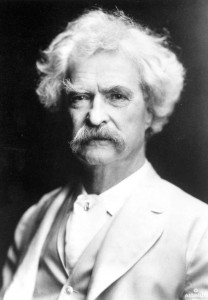One of the things that surprised me most at the Chicago Pen Show discussion, in which some veteran vendors and rookie collectors had some difficulties seeing eye to eye on matters of collecting and navigating a pen show, was that several veteran vendors who are extremely well versed in the history and details about fountain pens seemed to know very little about the art of 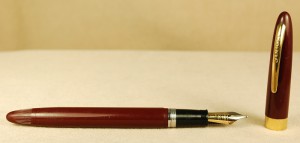 selling.
selling.
Several of their complaints about rookie collectors were misdirected. “Rookie pen collectors will ask a million questions and never buy anything.” “Rookie collectors only like modern pens/wet noodle nibs/etc.” “Rookie collectors take up too much space in front of my table during peak sales times.”
It isn’t the Rookie Collector’s fault for not buying or for asking questions. Clearly, the Rookie is interested in buying. It is the vendor’s fault for not “selling.” With a little sales training, these vendors can easily avoid these sales pitfalls, deliver excellent customer service and have rookie collectors coming back for more and better pens year after year!
Certain presidential candidates love to brag about the art of the deal, but I found I stumbled into the best sales training early in life. After college, I still didn’t know what I wanted to be…and I was already grown up. When a new car dealership opened near me, I applied just so I would have work and time to figure out my next move. I always loved cars, and I’m perfectly comfortable talking up total strangers. It was a great fit for a year, and I probably learned more practical skills at that job than I have at most of my other careers since.
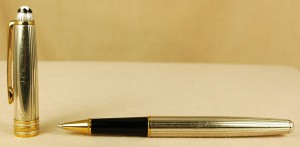 The neat part about this dealership was that it was one of the first in the country to offer a return policy, a 6-month warranty on its vehicles and a no-pressure, no-haggle sales experience. Deprived of the tactics associated with used-care salesmen, we were given extensive training about no-pressure salesmanship. As we were still commission-based, we had to learn to quickly weed out the tire kickers from the buyers. Everything I learned at the dealership translates directly to pen sales.
The neat part about this dealership was that it was one of the first in the country to offer a return policy, a 6-month warranty on its vehicles and a no-pressure, no-haggle sales experience. Deprived of the tactics associated with used-care salesmen, we were given extensive training about no-pressure salesmanship. As we were still commission-based, we had to learn to quickly weed out the tire kickers from the buyers. Everything I learned at the dealership translates directly to pen sales.
Rule 1: Nobody comes to a pen show without the intent to buy pens. As you might only see 100 customers in a day, you must make the most of every opportunity you can to maximize your sales.
Rule 2: Ask questions. You know your merchandise way better than any of your customers. Don’t rely on them to just walk past, spot that one magical pen they want and buy it. Slow them down. Say hello and pepper them with questions.
If you know what to ask, you can sell a $500 pen in as few as two or three minutes and move on to the next customer, without skipping a beat. As I carry a mix of pens on my table, I usually ask this question first of anybody I don’t remember from a previous encounter: “So. What are you into today? Vintage or modern?”
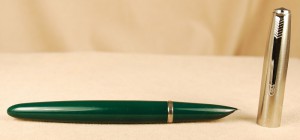 I follow that up with, “Do you have a favorite brand or feature you like about vintage/modern pens?”
I follow that up with, “Do you have a favorite brand or feature you like about vintage/modern pens?”
Or if they said modern, I ask, “Ballpoint, rollerball or fountain pen?” If they say vintage, I’ll narrow it down to brands, nibs or filling systems.
Maybe that gets followed up with “What price point are you looking for?”
In less than a minute, I’m pointing out all of the pens that I have that they might be interested in. If I don’t have what they want, they’re moving on and I’m free to sell to the next person walking past. Otherwise, I’m maybe getting them interested in a pen they want or didn’t know that they wanted.
Rule 3: Explain why your pens are better. As I show them the pens in which they are interested, I quickly point out that I do and stand by all of my own restoration work. If I know I am particularly competitive on a certain price, I point it out.
Rule 4: Get the merchandise in their hands. I gently demonstrate the pen and how it works. I hand it over to the customer, while holding on to the cap. (People are way less likely to inadvertently wander off with a pen if they don’t have the cap or the barrel.) If I know of a flaw, I point it out. I let them dip the pen and write with it. I ask about the way it feels and maybe explain how to find the sweet spot on the nib. This builds trust, rapport and confidence in me as a seller.
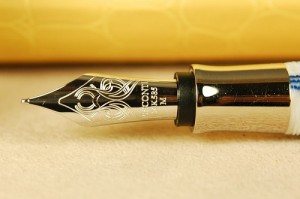 Rule 5: Ask for the sale. If they’ve spent a few minutes touching the pen, loving it, writing with it and it seems like a potential winner, I ask for the sale. The price tags are on my pens, and I often just say something like, “So, what do you say? Do we have a deal?”
Rule 5: Ask for the sale. If they’ve spent a few minutes touching the pen, loving it, writing with it and it seems like a potential winner, I ask for the sale. The price tags are on my pens, and I often just say something like, “So, what do you say? Do we have a deal?”
If I did my job correctly, the answer is yes. If not, I keep trying to fine-tune the search until they have a pen they do like.
Rule 6: If you don’t have the pen or type of pens they’re looking for, and you are in a peak sales period…politely say you don’t have it and move on to the next customer. However, always be closing, even when turning people away. “Listen, Mister, I’m only looking for Mont Blanc pens that are under $50. Do you have any?” “Sorry, Man. My Mont Blancs start at $150.” If the unrealistic buyer is dead set on $50, let them keep walking. But, if they’re really just looking for good prices on Mont Blanc, your answer might help direct them to your Mont Blanc pens. Either way, you are making room for the next person or lining up this person to buy something. It is a win-win situation.
If it is a slow day, you can maximize your sales opportunities by acting as an ambassador to whatever it is you have on your table.
I often get rookies who have never tried vintage pens or fountain pens in general. I take the opportunity to show them different filling systems, nibs or other features to familiarize them with vintage pens. I get them dipping and writing with several to see how they feel. I try to keep the pens I show off under $50. This way, they might be more inclined to try vintage if the price tag isn’t too steep and the experience was fun and enlightening. I also try to teach them what to look for regarding damage and other issues with vintage pens. Maybe only 30% to 40% of the people buy something after the lecture, but that is still great considering that these same people were about to walk by without saying a word to me.
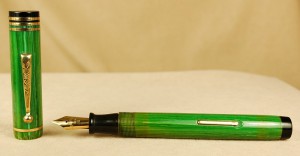 Hopefully, this advice helps you while hosting your next table at a pen show. This is the final article in my “Controversy in Chicago” series, and I really hope that the whole series has helped rookie collectors and veteran vendors get to know each other and make the pen show experience a far more pleasurable and useful experience.
Hopefully, this advice helps you while hosting your next table at a pen show. This is the final article in my “Controversy in Chicago” series, and I really hope that the whole series has helped rookie collectors and veteran vendors get to know each other and make the pen show experience a far more pleasurable and useful experience.
Best of luck at your next show! Have fun buying and selling!
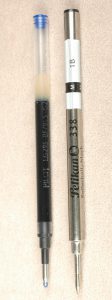


 Shopping Cart
Shopping Cart





